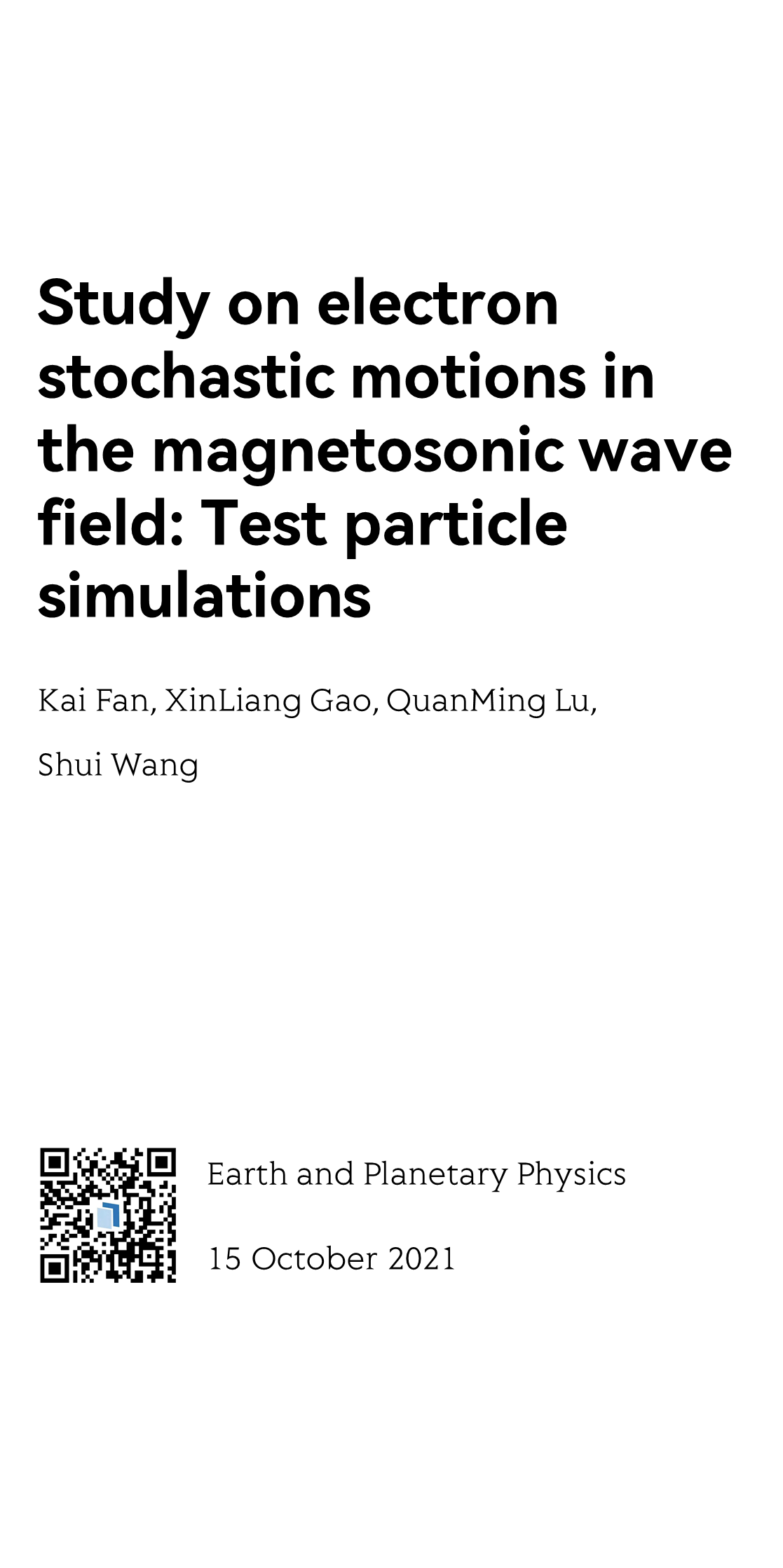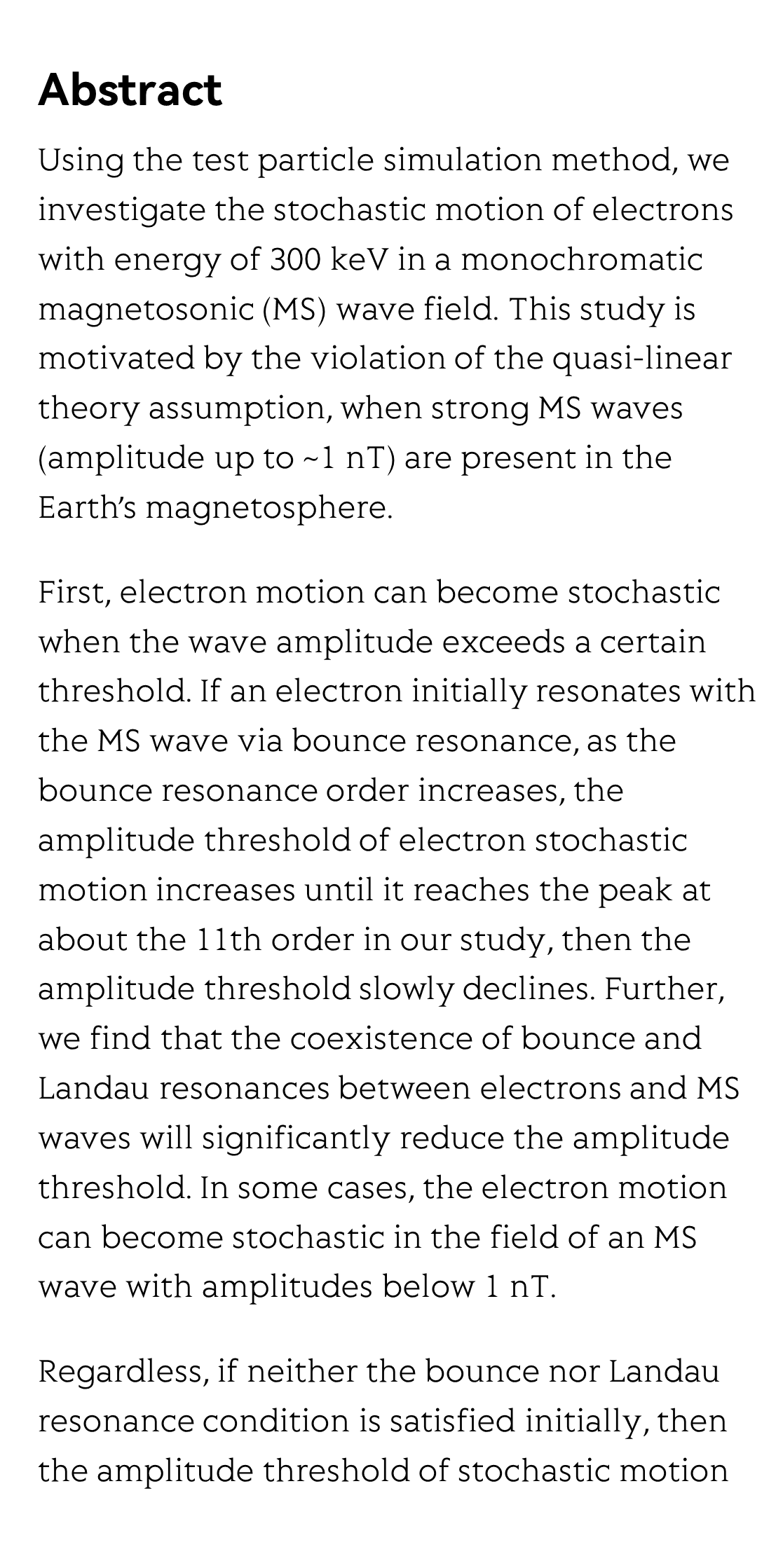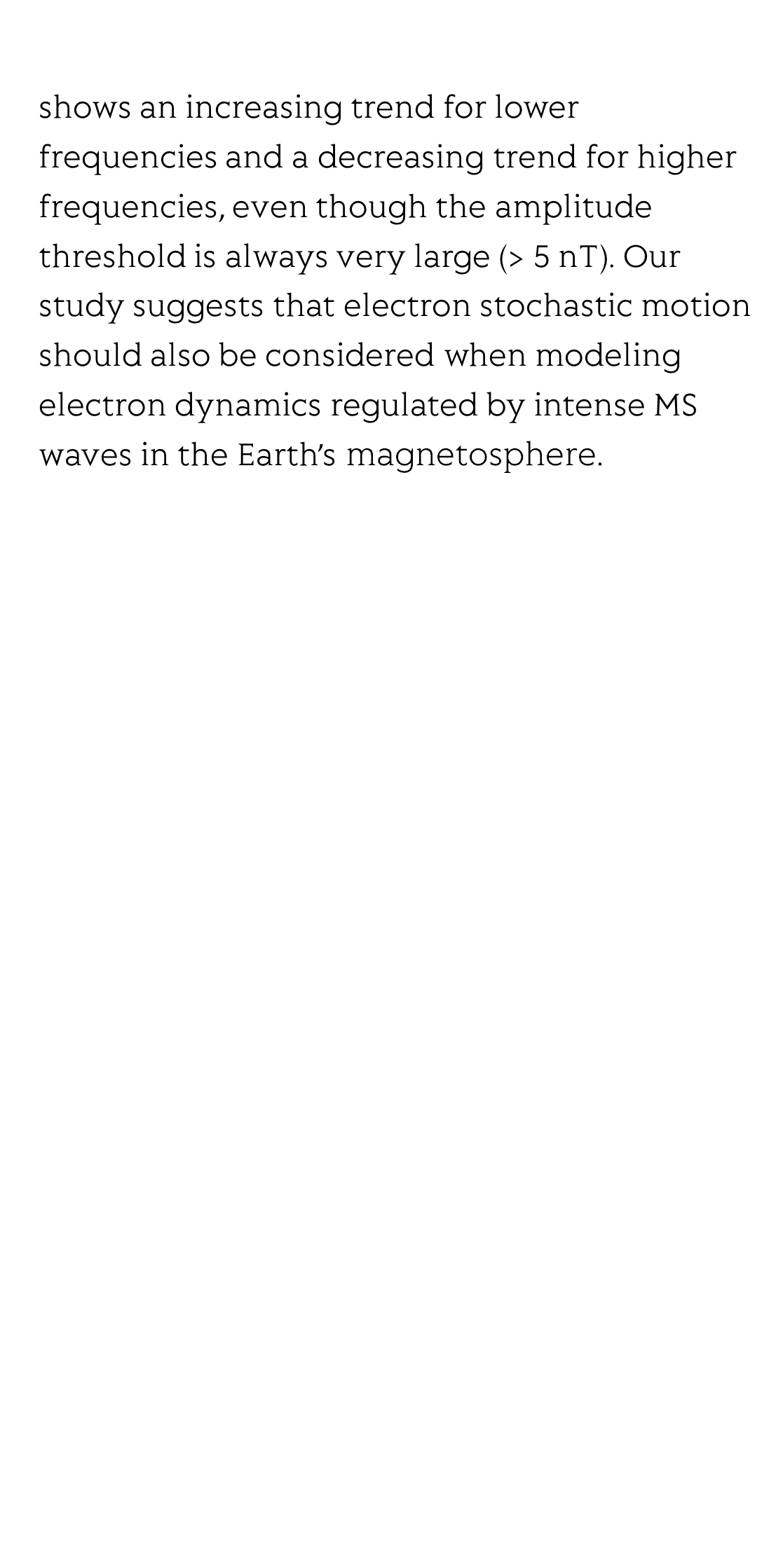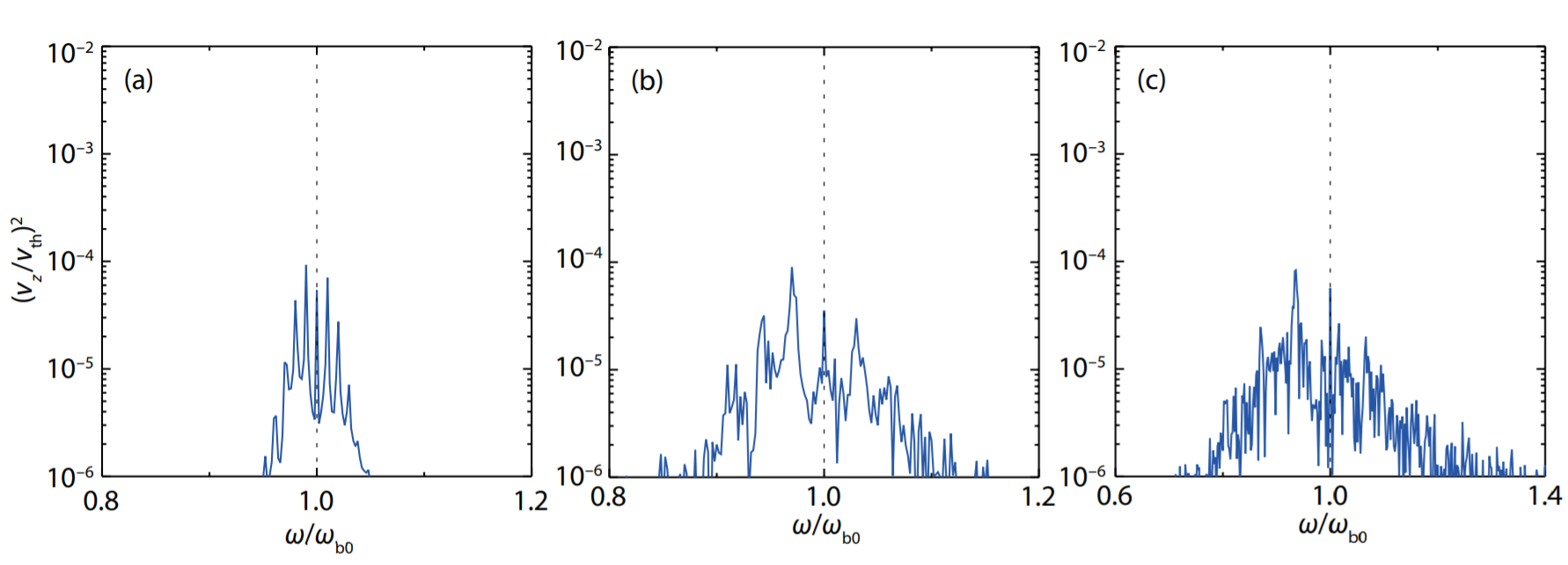(Peer-Reviewed) Study on electron stochastic motions in the magnetosonic wave field: Test particle simulations
Kai Fan 樊凯 ¹ ², XinLiang Gao 高新亮 ¹ ², QuanMing Lu 陆全明 ¹ ², Shui Wang 王水 ¹ ²
¹ CAS Key Laboratory of Geospace Environment, Department of Geophysics and Planetary Science, University of Science and Technology of China, Hefei 230026, China
中国 合肥 中国科学技术大学地球物理与行星科学系 中国科学院近地空间环境重点实验室
² CAS Center for Excellence in Comparative Planetology, Hefei 230026, China
中国 合肥 中国科学院比较行星学卓越创新中心
Earth and Planetary Physics
, 2021-10-15
Abstract
Using the test particle simulation method, we investigate the stochastic motion of electrons with energy of 300 keV in a monochromatic magnetosonic (MS) wave field. This study is motivated by the violation of the quasi-linear theory assumption, when strong MS waves (amplitude up to ~1 nT) are present in the Earth’s magnetosphere.
First, electron motion can become stochastic when the wave amplitude exceeds a certain threshold. If an electron initially resonates with the MS wave via bounce resonance, as the bounce resonance order increases, the amplitude threshold of electron stochastic motion increases until it reaches the peak at about the 11th order in our study, then the amplitude threshold slowly declines. Further, we find that the coexistence of bounce and Landau resonances between electrons and MS waves will significantly reduce the amplitude threshold. In some cases, the electron motion can become stochastic in the field of an MS wave with amplitudes below 1 nT.
Regardless, if neither the bounce nor Landau resonance condition is satisfied initially, then the amplitude threshold of stochastic motion shows an increasing trend for lower frequencies and a decreasing trend for higher frequencies, even though the amplitude threshold is always very large (> 5 nT). Our study suggests that electron stochastic motion should also be considered when modeling electron dynamics regulated by intense MS waves in the Earth’s magnetosphere.
Review for wireless communication technology based on digital encoding metasurfaces
Haojie Zhan, Manna Gu, Ying Tian, Huizhen Feng, Mingmin Zhu, Haomiao Zhou, Yongxing Jin, Ying Tang, Chenxia Li, Bo Fang, Zhi Hong, Xufeng Jing, Le Wang
Opto-Electronic Advances
2025-07-17
Multiphoton intravital microscopy in small animals of long-term mitochondrial dynamics based on super‐resolution radial fluctuations
Saeed Bohlooli Darian, Jeongmin Oh, Bjorn Paulson, Minju Cho, Globinna Kim, Eunyoung Tak, Inki Kim, Chan-Gi Pack, Jung-Man Namgoong, In-Jeoung Baek, Jun Ki Kim
Opto-Electronic Advances
2025-07-17
Non-volatile tunable multispectral compatible infrared camouflage based on the infrared radiation characteristics of Rosaceae plants
Xin Li, Xinye Liao, Junxiang Zeng, Zao Yi, Xin He, Jiagui Wu, Huan Chen, Zhaojian Zhang, Yang Yu, Zhengfu Zhang, Sha Huang, Junbo Yang
Opto-Electronic Advances
2025-07-09
CW laser damage of ceramics induced by air filament
Chuan Guo, Kai Li, Zelin Liu, Yuyang Chen, Junyang Xu, Zhou Li, Wenda Cui, Changqing Song, Cong Wang, Xianshi Jia, Ji'an Duan, Kai Han
Opto-Electronic Advances
2025-06-27
Operando monitoring of state of health for lithium battery via fiber optic ultrasound imaging system
Chen Geng, Wang Anqi, Zhang Yi, Zhang Fujun, Xu Dongchen, Liu Yueqi, Zhang Zhi, Yan Zhijun, Li Zhen, Li Hao, Sun Qizhen
Opto-Electronic Science
2025-06-25
Observation of polaronic state assisted sub-bandgap saturable absorption
Li Zhou, Yiduo Wang, Jianlong Kang, Xin Li, Quan Long, Xianming Zhong, Zhihui Chen, Chuanjia Tong, Keqiang Chen, Zi-Lan Deng, Zhengwei Zhang, Chuan-Cun Shu, Yongbo Yuan, Xiang Ni, Si Xiao, Xiangping Li, Yingwei Wang, Jun He
Opto-Electronic Advances
2025-06-19







